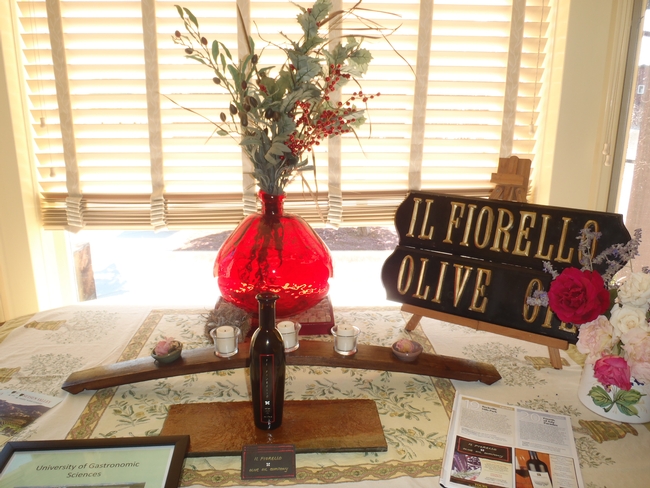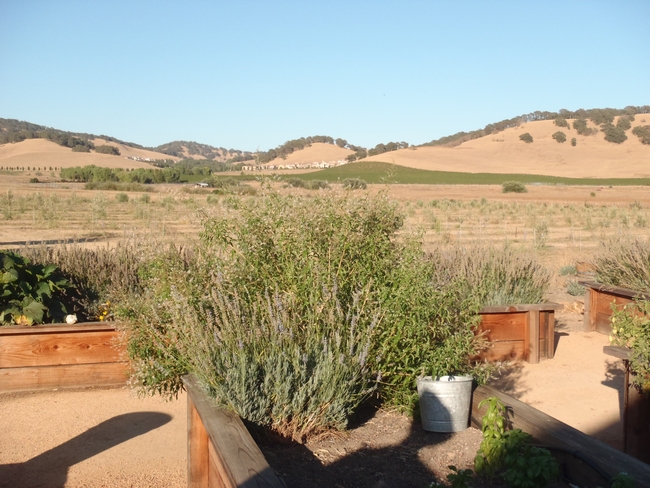Local Olives
Admittedly, this blog entry leans more towards food than cultivation, but hey, isn’t food one of the main reasons why we grow edibles in addition to edibles just being plain beautiful?? I believe our local readers will be delighted to know that we have a number of knowledgeable local olive growers, and, in turn, olive oil producers here in Solano County. This blog entry will feature one such local source—Il Fiorello Olive Oil Company located at 2625 Mankas Corner in Suisun Valley.
Il Fiorello (Italian for “little flower,” which describes the olive flower itself) is owned by Mark and Ann Sievers. I had the pleasure and privilege of attending a marvelous Chocolate and Olive Oil tasting event at Il Fiorello recently. This blog entry will focus exclusively on the olive aspect of the event (rather than chocolate), as olives can be cultivated locally.
During the event, Mark gave an informative lecture, filled with fun facts about olives:
- Most Olives are grown within 200 miles of the Mediterranean Sea.
- There are over 800 varieties of olives.
- Different olives produce different flavored olive oils.
- Greeks use more olive oil than just about anyone.
- There are approximately 800 olive mills in Sicily alone; contrast that with just 53 mills in the United States.
- California is the center for the olive oil industry in the United States.
- Oldest olive tree is in Sicily—approximately 2,600 years old.
Mark explained that when tasting olive oil, you should first use your nose to smell the oil and then taste for depth (fruitiness/bitterness, pungency (e.g., how peppery is it?), and balance). Pungency can be described by the number of coughs you experience as a result of tasting an oil. One of the many varieties of olives that the Sievers grow, is called a Lecchino, which is delicate in flavor and pairs well with vegetables such as spinach. Another variety that the Sievers grow is the Frantoio, which produces a more robust olive oil.
When caring for olive trees, Mark advised that one must be very careful to prune the trees because olives grow on 1-year old wood. Apparently, olive trees are fairly pest-resistant overall, having only one real pest—the olive fly (http://ipm.ucdavis.edu/PMG/PESTNOTES/pn74112.html ) which, according to Mark, is pretty easy to control. One healthy tree can produce approximately 40 pounds of olives which will render 2 quarts of olive oil. Mark said that olives start to deteriorate the moment they are harvested (helpful tip for those of you who have olive trees and harvest from them). Olives must be milled within 24 hours of harvest to achieve a superior oil.
Mark advised that olive oil, if kept properly (no heat, no light, no oxygen) in a cool, dark place, will last up to 3 years. He warned that most of the olive oil on supermarket shelves is rancid (I heard the same when attending an olive workshop presented at UC Davis this year) and that the only way a consumer knows to tell the difference, is to have developed a palate for good olive oil.
So if you love olives but do not have your own olive trees, look no further than to our local sources.

Photos by Betty Homer

P9021284

P9021287

